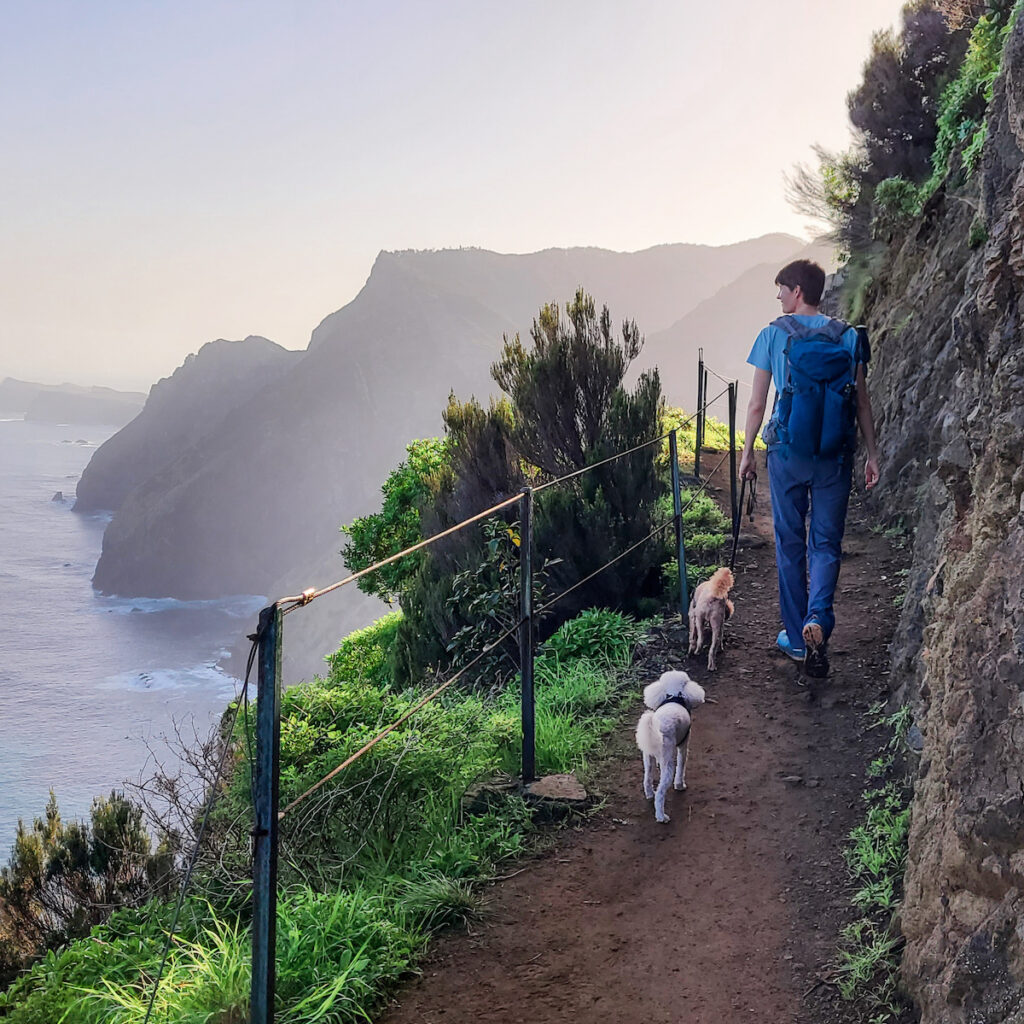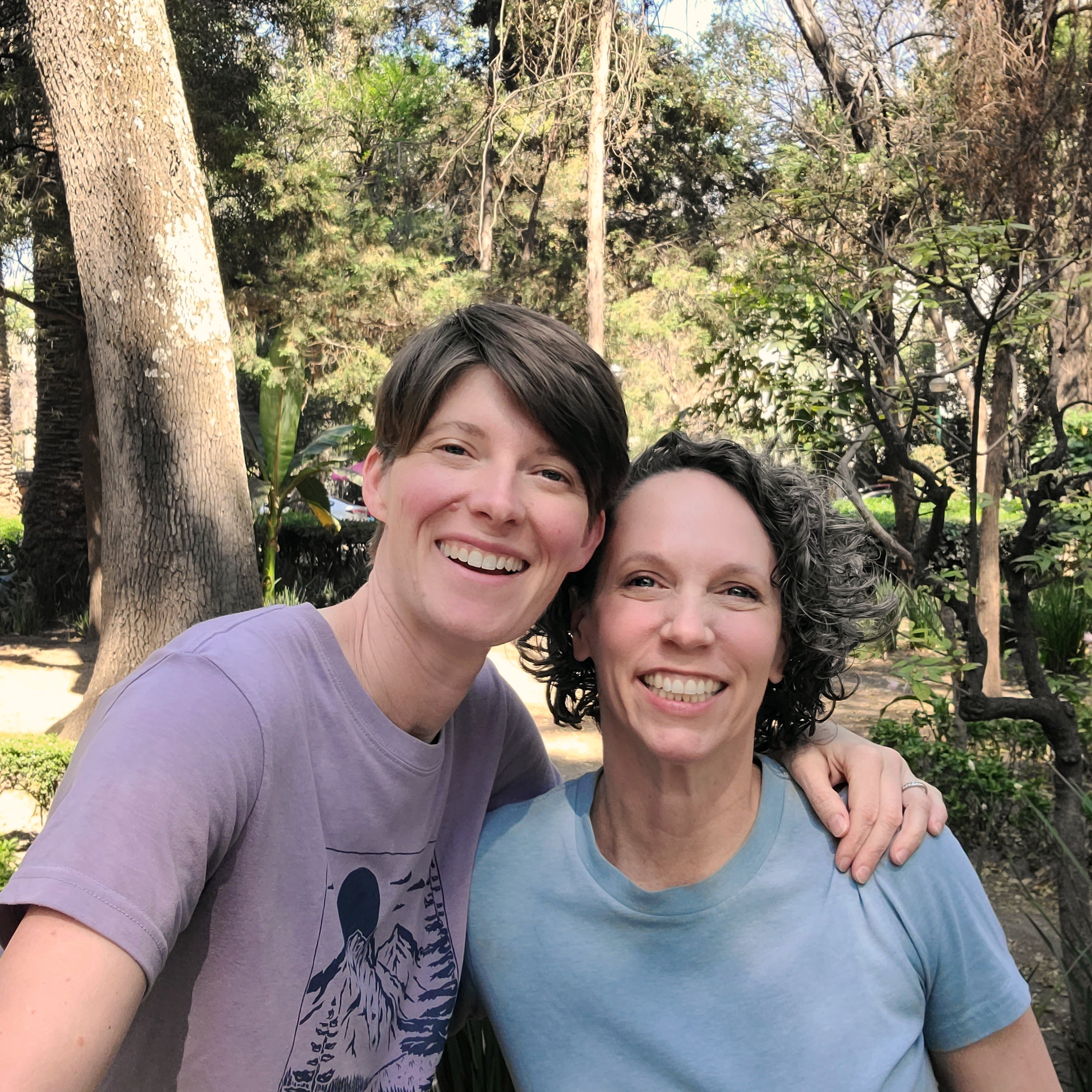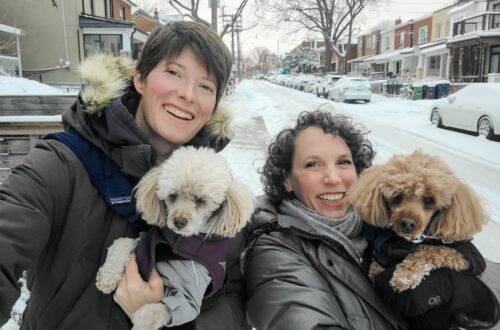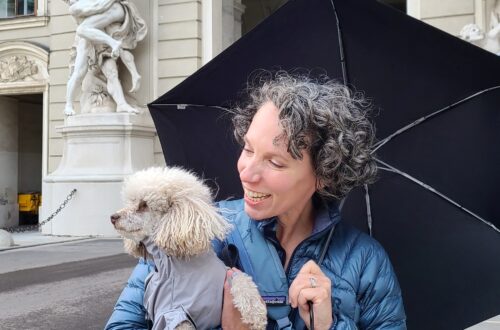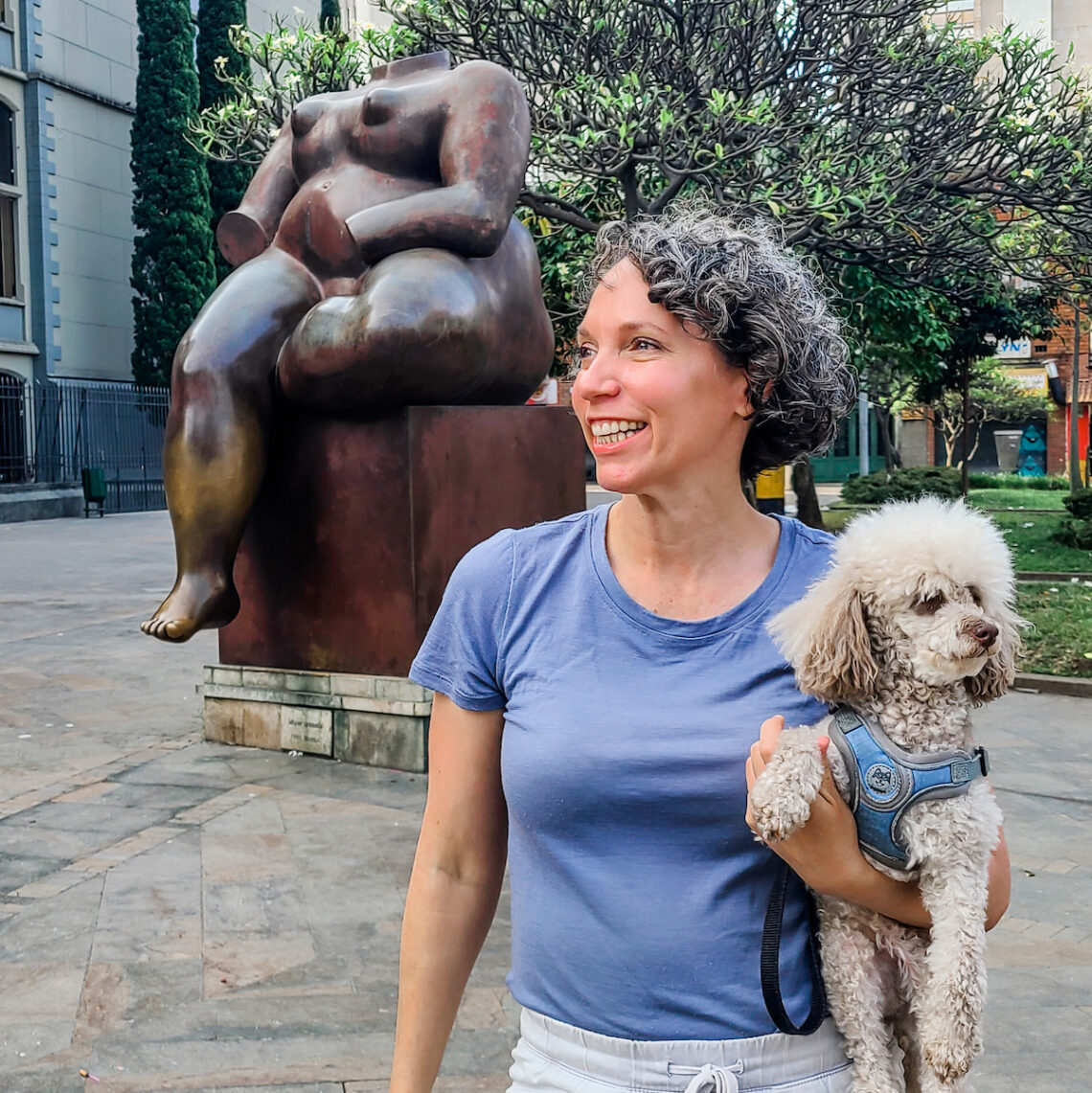
The Very Last Chapter in our Four-Year, Around-the-World Adventure
The final year of our adventure kicked off in Medellin, a city that turned out to be one of our least favourite destinations. We arrived with high hopes; we’d heard exciting things about Medellin from digital nomad blogs and vlogs. We were expecting swishy condos and an exciting food scene.
All that was indeed available but we were also met with the reality of spending a month in a city with exceptionally high income disparity. We found it wearing to step out of our apartment in the middle-class neighbourhood of Laureles and face down a street scene that included a lot of homelessness and people in need. We learned not to sit too close to the patio rail at restaurants so that we could avoid the constant requests for money.
For the first time in our travels, we chose to join group tours as a matter of safety instead of simply wandering the streets on our own. We got an introduction to Colombian tastes on a food tour through Laureles. We checked out the neighbourhood of Communa 13, once the scene of violence during the 1980s and 90s but now a family-friendly attraction complete with break dancers and food vendors.
We also got an overview of Medellin’s history and toured the key sights, including the busy Plaza Botero — a place where police officers stopped our group to remind everyone to keep an eye on their belongings.
Sadly, we were ready to leave even before the month was up. Unfortunately, once again, we had nowhere else to go. We had planned to be in Peru for the next leg of travel but the country was suddenly in a state of emergency due to political unrest.
We decided to lean into what we love about travel. We would stay in Colombia but avoid the big cities. It was time to head into the countryside for hiking, home cooking and beautiful scenery.
Hacienda hopping in the Zona Cafetera
With great relief, we said goodbye to Medellin and hopped on a plane headed to Colombia’s Zona Cafetera, or coffee region. We’d had our fill (and then some) of big city living and were hoping to discover a different side of Colombia.
We started with a two-week tour of the region, famous for its coffee farms and colourful villages, including showstoppers Salento and Filandia. Along the way, we stayed in a series of haciendas that all featured the trademark architecture of the region: white walls, red trim, tiled floors. We also had our fill of rustic home cooking including the formidable bandeja paisa, a weighty platter of beans, rice, arepa, chorizo, plantain, chicharrón, avocado and beef, topped with a fried egg.
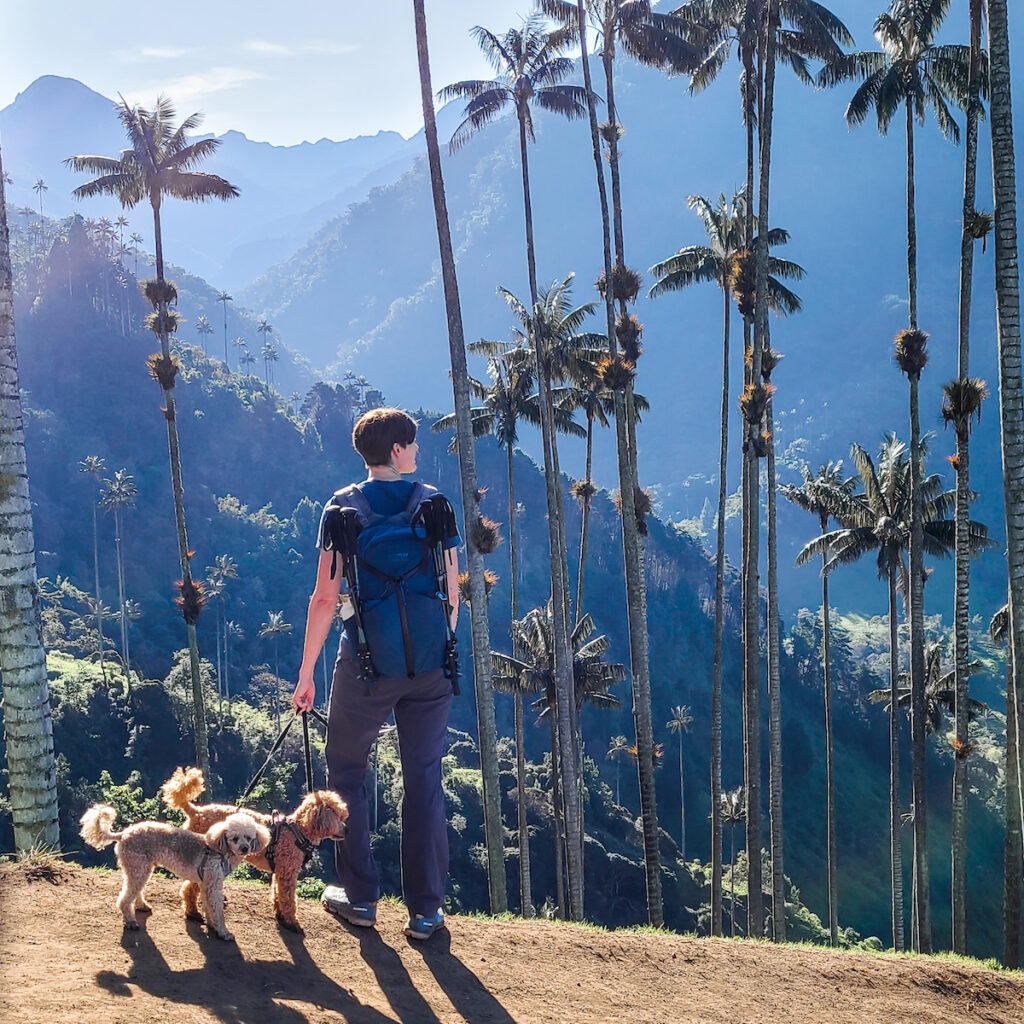
Naturally, we had to include a tour of a coffee plantation that ended with tasting a series of truly strong brews. And we couldn’t miss hiking our way through Cocora Valley, which features the tallest palm trees in the world.
Next, it was time to recharge. Spending a month in fast-paced Medellin while re-doing all our carefully-constructed forward plans had taken a toll. We rented a spacious, modern hacienda that was a 30-minute jeep ride from the nearest town and stayed there for five gloriously quiet weeks. We spent our days working out, wandering the hills, researching our next adventures, cooking, or just drinking in views of the region from our dining room.
The reset worked. When our time in the Zona Cafetera was up, we were ready to face down the crowds in Colombia’s most popular tourist destination.
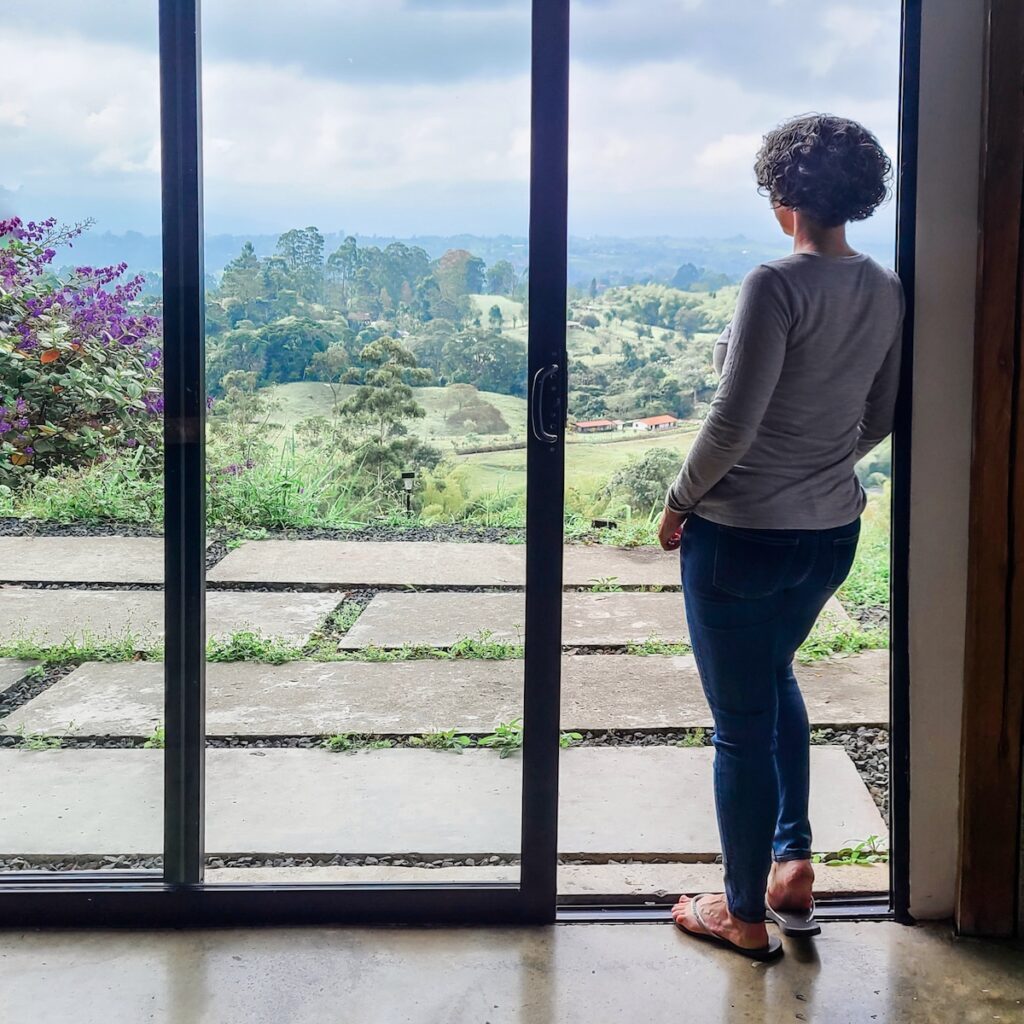
Finding magic in Colombia’s north
Cartagena is Colombia’s most spectacular city but also seems to be its most crowded. At the crack of dawn, the city was blissfully cool and quiet and we could take a few crowd-free photos of the colonial architecture and colourful street art.
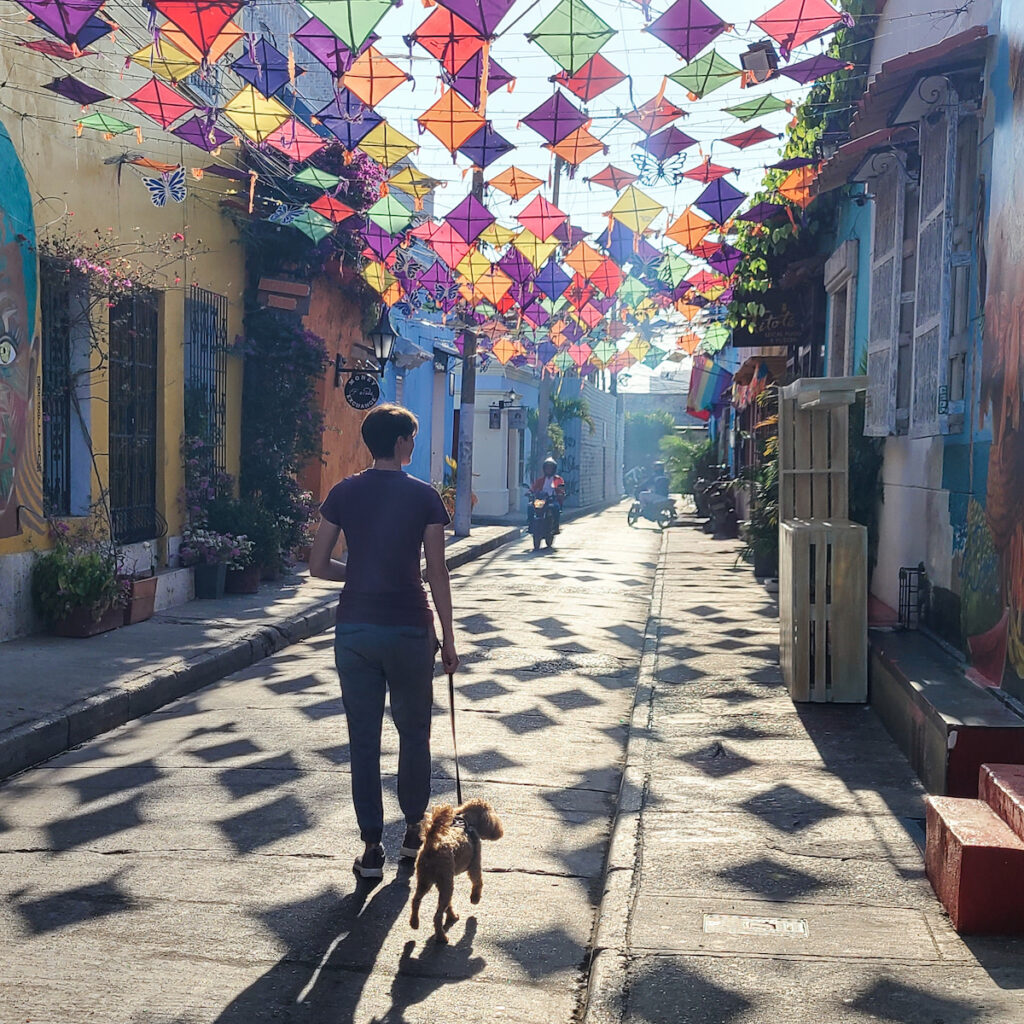
As the day wore on, the temperatures soared and the streets absolutely teemed with tourists, touts, and vendors. It was an effort to keep up with our group for a tour of the historic centre and discussion of Cartagena’s sad history as a prominent slaving port.
We were glad to have seen Cartagena but equally glad to say goodbye and head off to Palomino, a laid-back beach town. Palomino is becoming more popular but still retains its off-the-beaten-track vibe with plenty of vegan smoothie bowls and backpacker hostels to go round. Here we were finally able to relax, whether poolside at our swanky villa or wandering the endless coastline.
The last stop on our journey was the most memorable. We made our way to Minca, an adventure town located in the Sierra Nevada mountains that offers waterfalls, hiking, and birdwatching. We stayed in a stunning eco-resort located on such a rutted, steep trail that only a sturdy local jeep could make the trip. This remote stay gave us a chance to learn about the Wiwa, an indigenous group that has lived in the region for centuries. The entire experience was magical and we couldn’t recommend it more.
We were on a high when we arrived at the Santa Marta airport for our flight back to Canada. Unfortunately, our happiness soon evaporated when we discovered that the airline had lost our pet-in-cabin booking and we wouldn’t be able to board the plane. Suddenly we were stuck in Santa Marta with no flight out and nowhere to spend the night. After three stressful days and countless hours on the phone with customer service, we finally secured our flights back to Toronto. By then, the travel burnout had truly set in.
A happy return to Europe
Our six months in South America offered up many wonderful experiences — hiking to the rim of Ecuador’s Quilotoa Crater, recharging in Colombia’s coffee region, adventuring in Minca — but it had also come with a lot of challenges.
The reasons were many. A month in Medellin was draining; we were forced to change our Peru plans due to political unrest; the admin and vet visits required to import and export our dogs seemed unending; finally, we got stranded at the Santa Marta airport. All of it took a toll.
We were ready for travel to feel easy again, particularly travel with our dogs. It was time to head back to Europe where we could cross borders with the pups just by flashing their EU Pet Passports. We cooked up a highly ambitious itinerary that covered a cluster of countries we’d never been to before: Czech Republic, Austria, Slovakia, Hungary, and Romania. The best part was that, after our first trans-Atlantic flight, we wouldn’t need to step onto a plane the entire summer; it was train travel all the way.
We decided to speed through the most expensive destinations — Prague and Vienna — and then slow down to our usual snail’s pace. And we were determined to fit in as much inn-to-inn hiking as we possibly could. It’s the kind of adventure we love the most and Europe is the very best place for experiencing it.
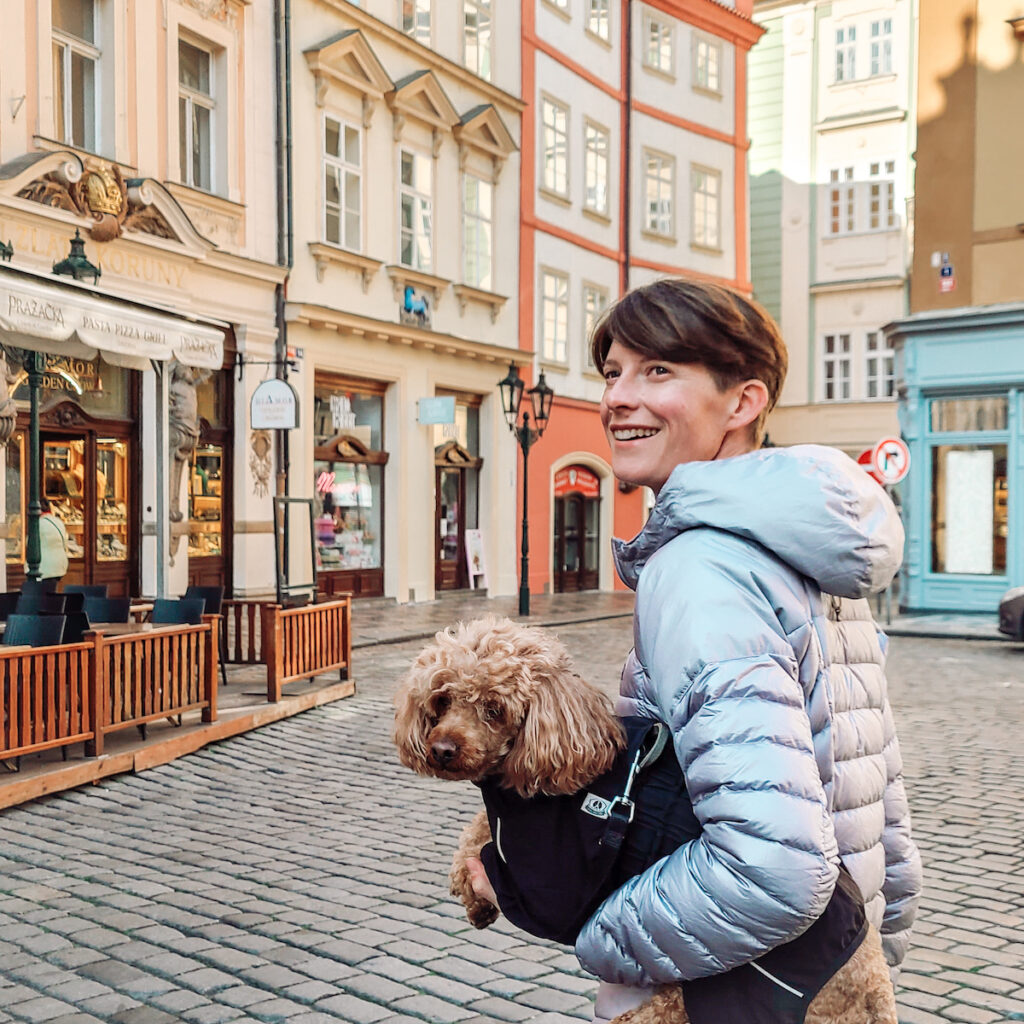
First, there was Prague, a beautiful gem of a city. Every building seemed to have a story to tell. Unfortunately, even in shoulder season, it was bursting with tourists. We followed the crowd to the city’s blockbuster’s sights – the Astronomical Clock, the Charles Bridge, Prague Castle — but happily peeled off in search of a more local experience.
We took a train just a couple hours out of town to explore the Bohemian Paradise, an extensive nature reserve where we could walk through stunning geological formations by day and tuck into cosy inns at night. It was the perfect start to our time in Europe — and then our luck ran out in Vienna.
Rained out in Vienna
We were on a high when we left the Czech Republic but quickly crashed down to earth when we realized that our visit to Vienna was going to feature rain — lots and lots of rain. It turned out that we had arrived exactly on time for an unseasonably wet May and it was going to last for our entire stay. Nevermind, we said to ourselves. We’re only here for a week and we’re going to make the most of it.
We popped the dogs in their rain gear, grabbed our umbrellas and headed into the historic centre for a very damp self-guided Rick Steves audio tour. It was a morning of struggling to hold onto umbrellas and wet poodles in the pelting rain, while simultaneously trying to say something noteworthy to the camera. Not exactly our most cinematographic YouTube video but full points for effort.
That said, we couldn’t have picked a better city to visit during inclement weather. Vienna has an incredible number of world-class museums and galleries and we easily could have filled every day. Of course, the admission prices are also world-class so we limited ourselves accordingly. I spent a delightful afternoon wandering the Leopold Museum, famous for its Klimt and Schiele collections. Meanwhile, Gillian tackled the Sisi Museum, featuring the personal effects of the popular Empress.
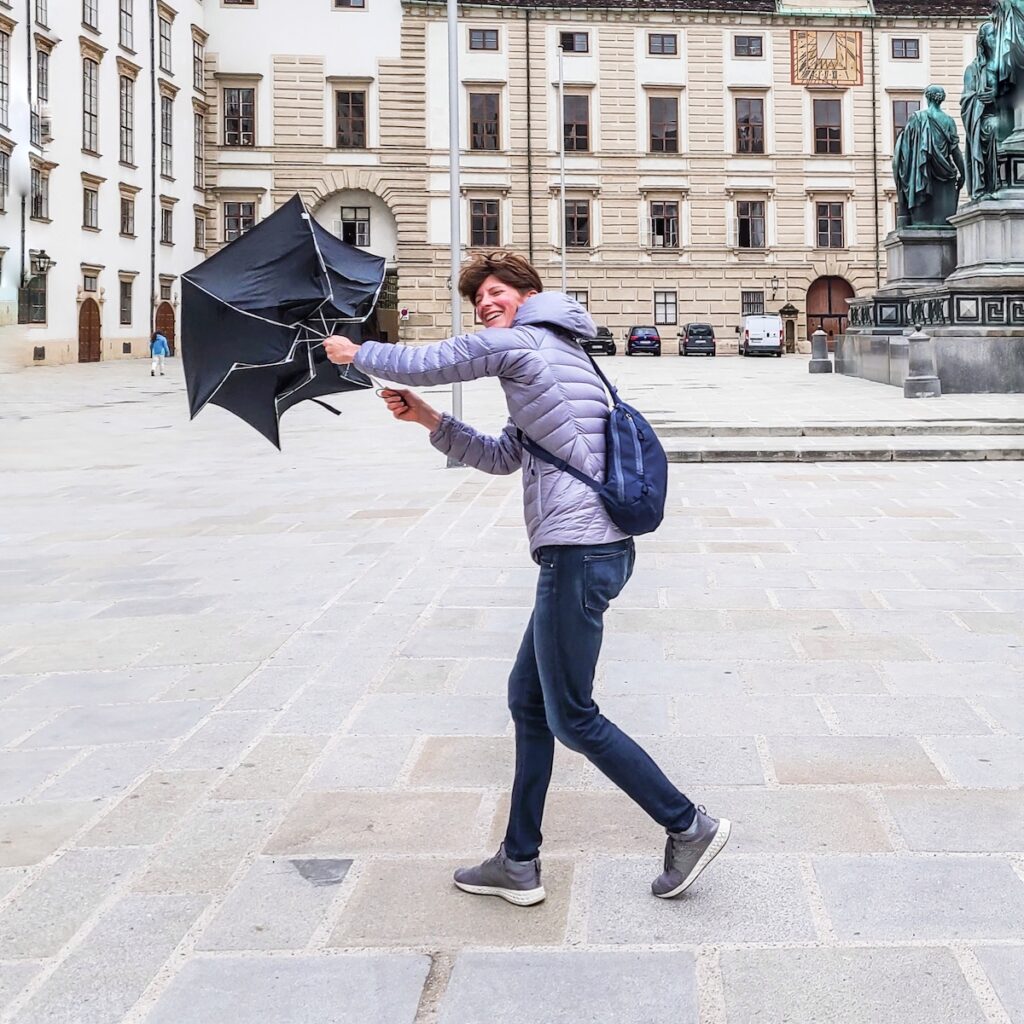
Miraculously, just as we left Vienna for our weeklong hike through the scenic wine region of Wachau, the clouds parted and the sun came out. This particular hike never made it into our YouTube videos but offers relatively easy inn-to-inn hiking in the hills overlooking the Danube. It’s yet another of Europe’s lesser-known gems for a decent multi-day hike and makes our recommended list — especially if you like ending a day on the trail with a shot of apricot schnapps.
Then it was time for a break. We’d slept in at least 15 different beds in the past month and were ready for a change of pace, ideally in a country that was a lot less expensive than Austria.
Taking a breath in Bratislava
As we had discovered after more than three and a half years of non-stop travel, the nomad lifestyle is only sustainable if you can step away from being a tourist every so often and get back to everyday routines. We had found the perfect spot for just that in the small, laid-back city of Bratislava in Slovakia.
Bratislava is the type of city where tourists usually just stop by for a short visit. It’s got a compact old town; you can cover off the main sights in a single day; and — to make it even easier — it’s just a short train ride away from Vienna.
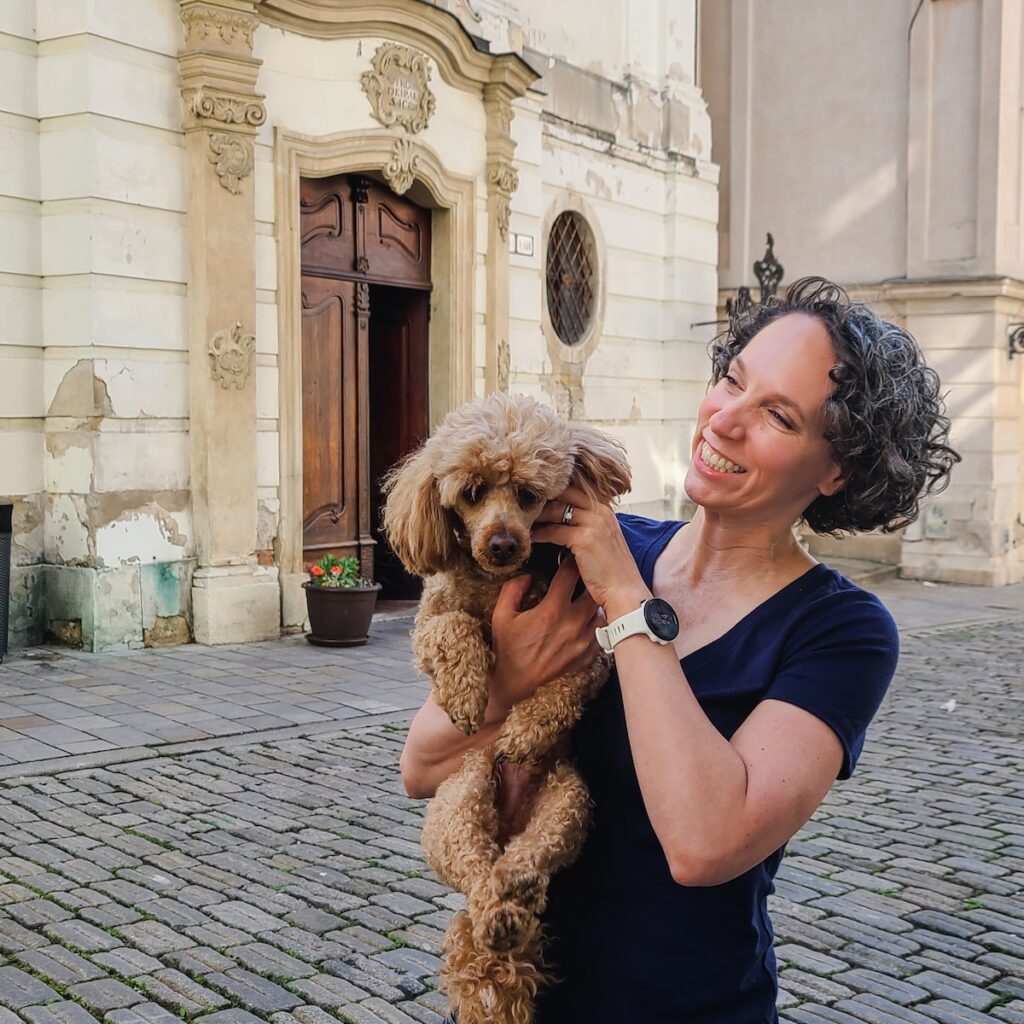
Instead of a day trip, we set down for an entire month and it was exactly what we needed after our whirlwind tour of the Czech Republic and Austria. We found a surprisingly stylish apartment that was just on the edge of the historic centre and a short walk away from the Danube.
The apartment was perfect — almost. The owner made a bold design choice and placed the shower behind a clear glass window inside the bedroom, very much in full view. We considered it a small mercy that the toilet was located way down the hall.
So began our love affair with Bratislava. Mornings were for exercise and leisurely breakfasts; afternoons for long walks along the waterfront with the locals. Dining out was affordable and there were even a few vegetarian options available to break up the roast duck and red cabbage meals. Whenever we were feeling ambitious, we could lazily tick off one or two of the main sights: the town square, Bratislava Castle, Michael’s Gate, the Blue Church, and all the quirky statues scattered around town.
We were feeling relaxed and restored by the time our month in Bratislava was up. Good thing too, because our next destination was going to be a lot more demanding. We were heading to a city that is one of Europe’s top destinations for…stag parties.
Budapest is still party central
When we decided to spend a summer touring central Europe, we knew without question that Budapest would be one of our month-long stays. In our minds, Budapest was a low-cost destination where we could get big value for our spend. Unfortunately our research on this topic turned out to be about a decade out of date.
Our clean and cute Airbnb smack in the middle of the tourist district was notable for two things: the breathtaking price and the general dirt and degradation of the building it was located within. We’d seen some filthy apartment buildings during our travels — including literally every Airbnb that we rented in Turkiye — and this one could compete with the best of them.
We quickly discovered that our Airbnb was based well within the party district. A person could barely walk from A to B without running into a stag party. The good times continued into the morning hours; Gillian would pass by the last of the revellers enjoying a morning beer on her way to the gym at 7am.
Still, Budapest has much to offer. We toasted the city’s gorgeous architecture while on a cruise down the Danube; we tried the hot and even hotter pools at Gellert Thermal Bath, one of the city’s famed bathhouses; we squeezed in with the other tourists to catch the views from the Fisherman’s Bastion: we sampled decadent cakes at Ruszwurm Confectionary, one of the oldest cafés in town.
We even peeked inside the stunning Central Market – worth a visit for the architecture only as it looks like only tourists shop here now. One of our favourite excursions was escaping the crowds entirely with a visit to the green and peaceful Margaret Island.

Overall, we found that Budapest suffers from the same tourist overwhelm as other European destinations, making for a less enjoyable experience. Nothing takes the magic out of travel like elbowing your way through the crowds to the best shot from the Fisherman’s Bastion. We were more than ready to get off the tourist trail by the month’s end – something we were easily able to accomplish in the next destination.
The last of Europe’s hidden gems
Despite the onslaught of crowds in Europe’s most popular destinations, there are still lesser-known gems waiting to be found, with Romania being a perfect example. We started with a truly rustic adventure: village-to-village hiking along the newly inaugurated Via Transilvanica trail.
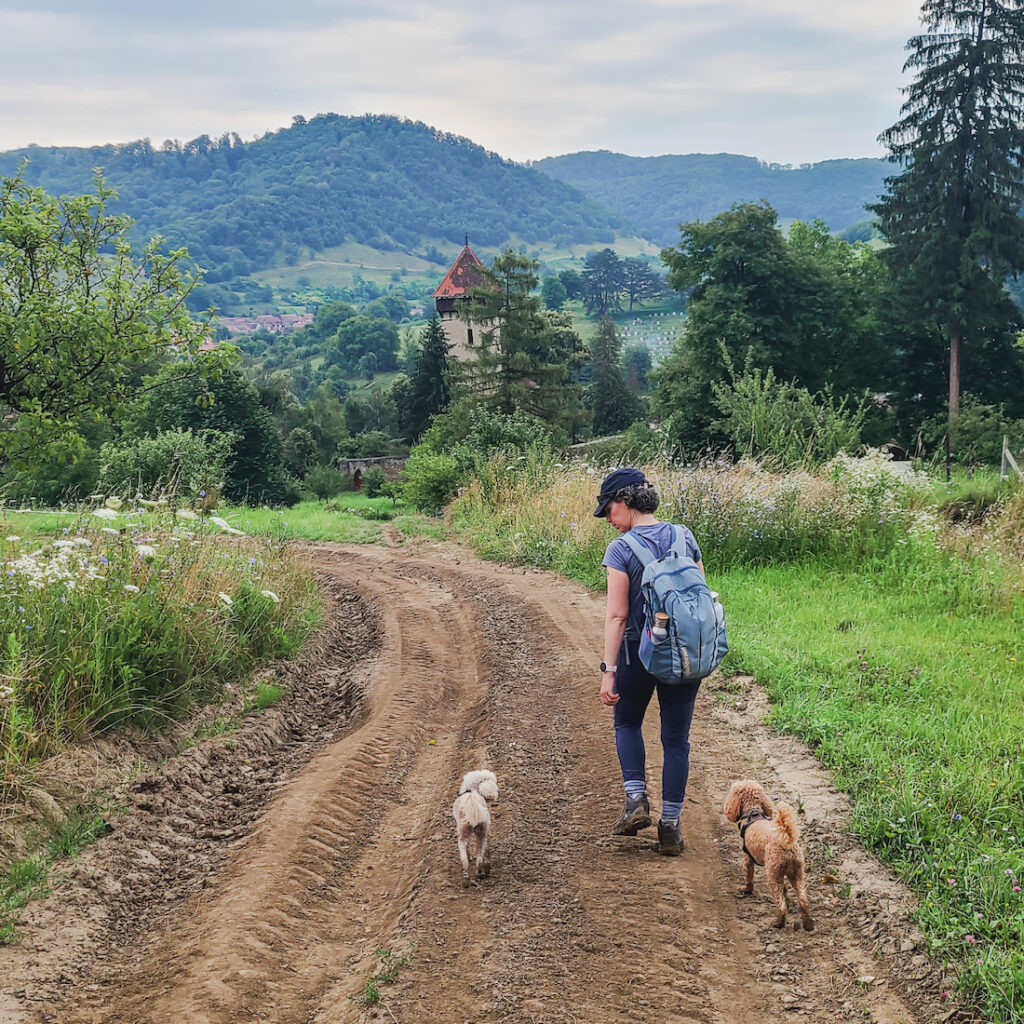
We hiked all day and stayed in traditional farmhouses at night, usually hosted by a kindly villager who didn’t speak even a little bit of English. The meals were simple and hearty (raw onions for breakfast, anyone?) and the homemade wine was always plentiful.
We capped that experience with a month-long stay in Brasov, a city that quickly became one of our favourites. Here was a slice of Europe that had everything we needed — charming old town, affordable dining out, decent Airbnb, a stunning mountain backdrop — yet without the crowds that had made the more popular European destinations so challenging.
Sure, it’s a fairly small city. We were able to tick off the major attractions in just a couple days: the Council Square; the Gothic-style Black Church; Catherine’s Gate with its wonderful turrets; and the two hillside towers with views over the city.
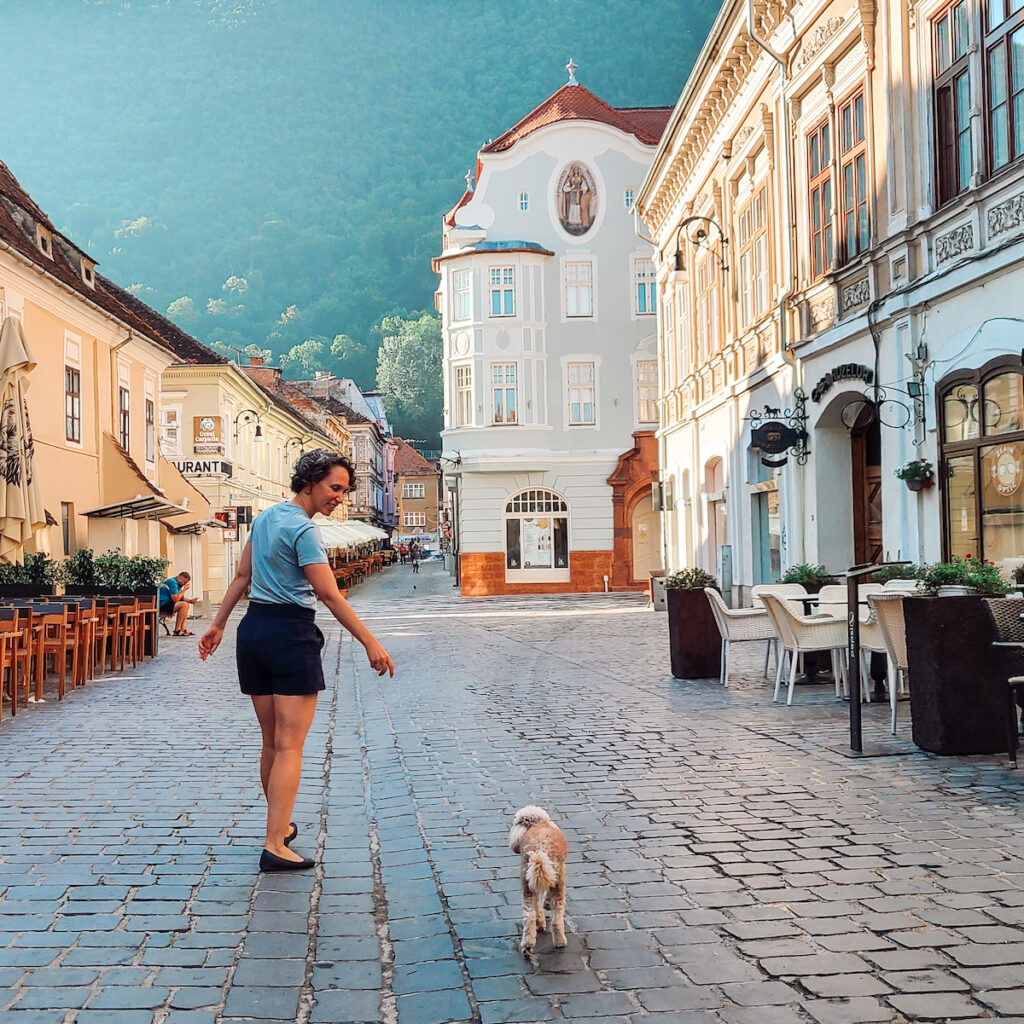
However, it was using Brasov as a base for exploring the region that worked really well for us. We went to Peleș Castle, the former summer residence of Romania’s very first King. We took a cable car to the top of the Poiana Brasov mountain and hiked the 11k back to Brasov. Gillian headed to Seven-Ladders Canyon to tackle a ziplining course that sounded truly terrifying to me (an hour long and totally unsupervised).
By the end of our time in Romania, our four-year non-stop adventure was getting close to the end. There was just one more country that we simply had to see before starting our next chapter.
Could Portugal be our next home?
The final country in our four-year, slow travel adventure around the world was Portugal. This is a destination that has soared in popularity with tourists and expats over the past decade. In fact, we’d had many discussions about making a base there since we’d met so many others on a residency or even citizenship track. Could Lisbon, Porto, or one of the smaller towns be a place we could call home?
We gave it serious consideration during our visit. We started with a very rainy week in Porto to catch up with friends. Certainly it’s an intriguing city – we loved our afternoons wandering the maze of streets and sampling port at a tasting house – but I would save future visits for a drier season.
Then we spent five weeks in Lisbon. This is another lovely city; we were charmed by the tilework on the buildings, the narrow streets, the vintage streetcars. However, less lovely were the mammoth cruise ships that pulled into port each day, disgorging thousands of passengers into Lisbon’s relatively small historic centre.
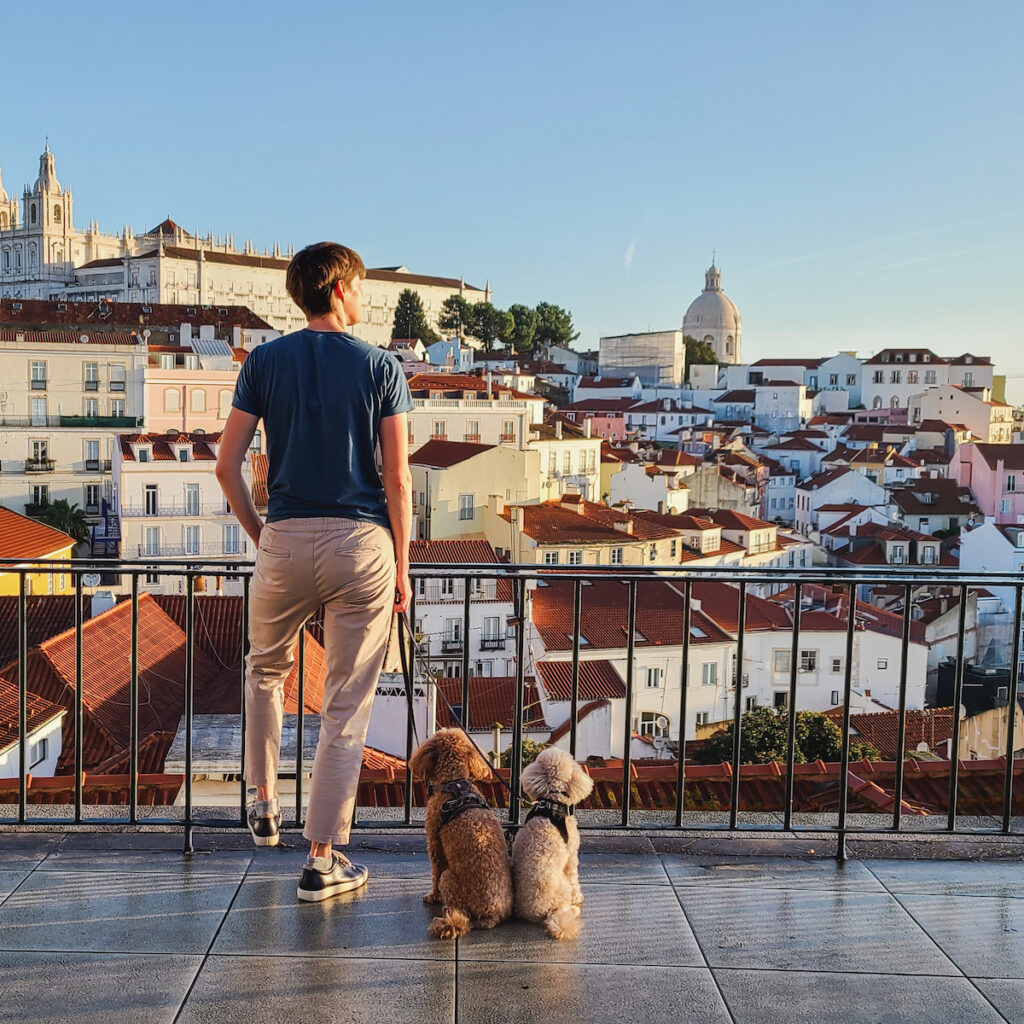
We very much felt that we were living inside a tourist attraction and often wondered how the city’s residents coped with the daily influx. And this was the off-season; we couldn’t even imagine how busy Lisbon must be during the peak summer months.
We still managed to have an enjoyable time in Lisbon. We did an early morning self-guided Rick Steves audio tour of the main sights; sampled classic Portuguese dishes in our little corner of Alfama; checked out some of the many scenic lookouts around town; and made our way to the artsy LX Factory warehouse district.
Lisbon is a beautiful city with an interesting history — but it wasn’t going to be a home for us. Fortunately, just as our visit ended, my online research uncovered a perfect gem of a house in the last place I expected to find it: a tiny village in our home province of Ontario. The only challenge was that we were already off and running to our final destination in Portugal, the far-flung island of Madeira.
A beautiful ending to our journey
We arrived in Madeira in a state of nervous excitement that had nothing to do with our destination. After Gillian’s million and one questions to the realtor about our dream home in a little village in Ontario — and an in-person visit by Gillian’s parents — we were finally ready to make an offer.
Given the time difference between countries, the back-and-forth of negotiations ended up stretching through the week. We kept waking up in the middle of the night to check our phones and see if the next counter-offer had come through. Needless to say, the charms of Madeira largely slipped by us during these nail-biting days.
The deal finally closed and we were ready to take stock of our surroundings. Madeira is a beautiful sub-tropical island that really comes alive during the December holiday season. The old town of Funchal already has a wonderful combination of 18th-century architecture and palm trees, with mountains in the background. When it gets festooned with lights during the holiday season, the whole effect is magical.
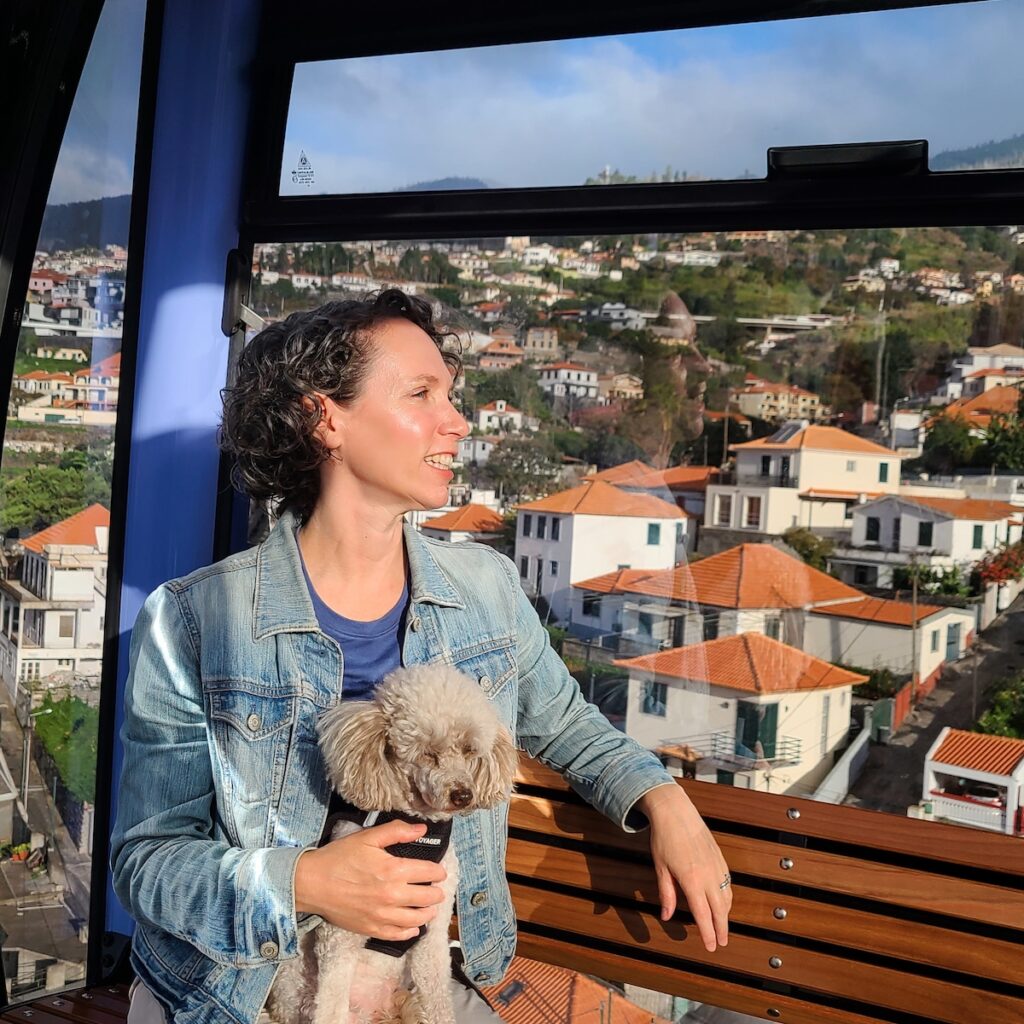
We couldn’t have been in a better location to enjoy the season; our Airbnb was just steps away from the Christmas market. While the markets of mainland Europe are much larger, this one came with earnest performances by local choirs and dance troupes, all in traditional outfits.
It was a beautiful way to close out an incredible but intense chapter of our lives. We were saying goodbye to nomadic living after four years on the road. We’d packed in a lot of once-in-a-lifetime experiences during those years, but it was no small amount of work to make our way from country to country, two dogs in tow.
Our home closed in early January and we spent the rest of the month frantically shopping for furniture and everything else we’d need to fill a house that we suddenly owned. While travel continues to be an important part of our lives — in fact, I’m writing this from a remote beach in the Gulf of Thailand — it’s a relief to know that we now have a place that we can always come home to.
